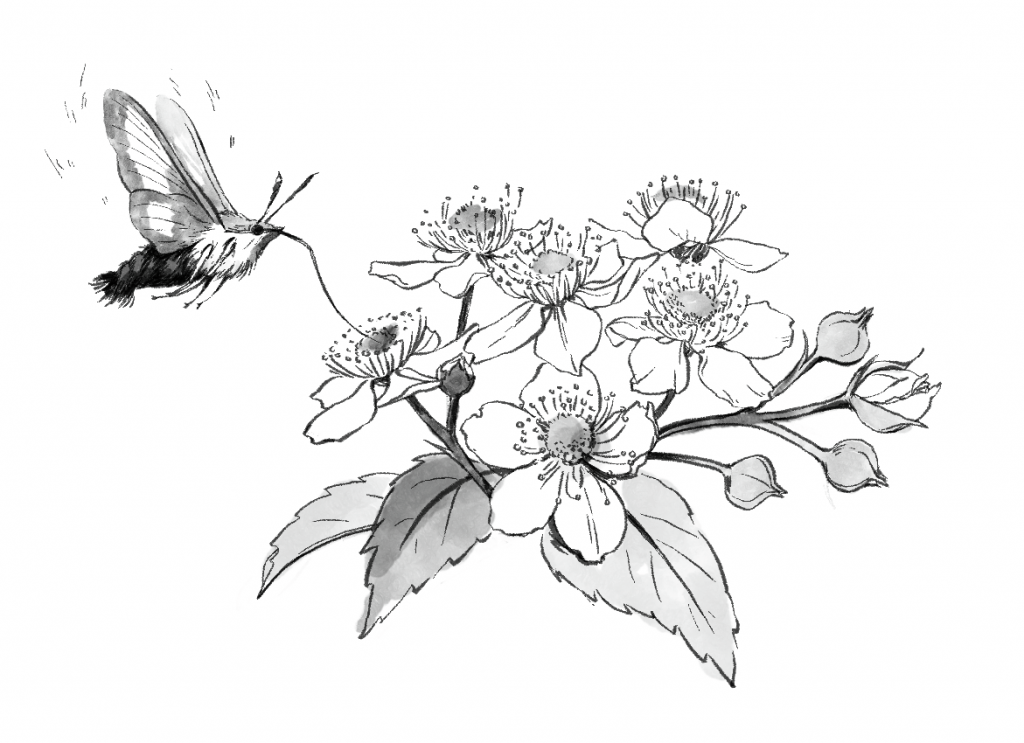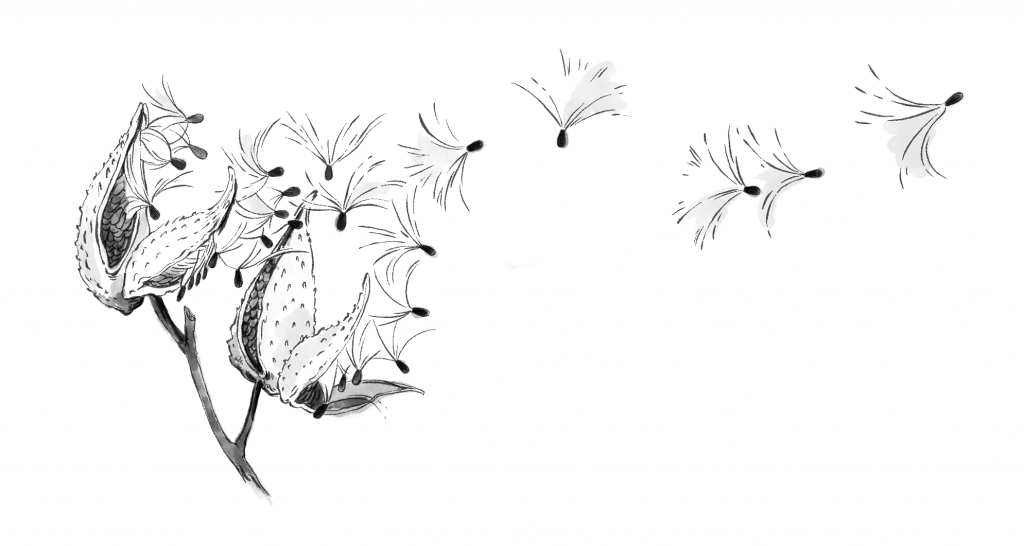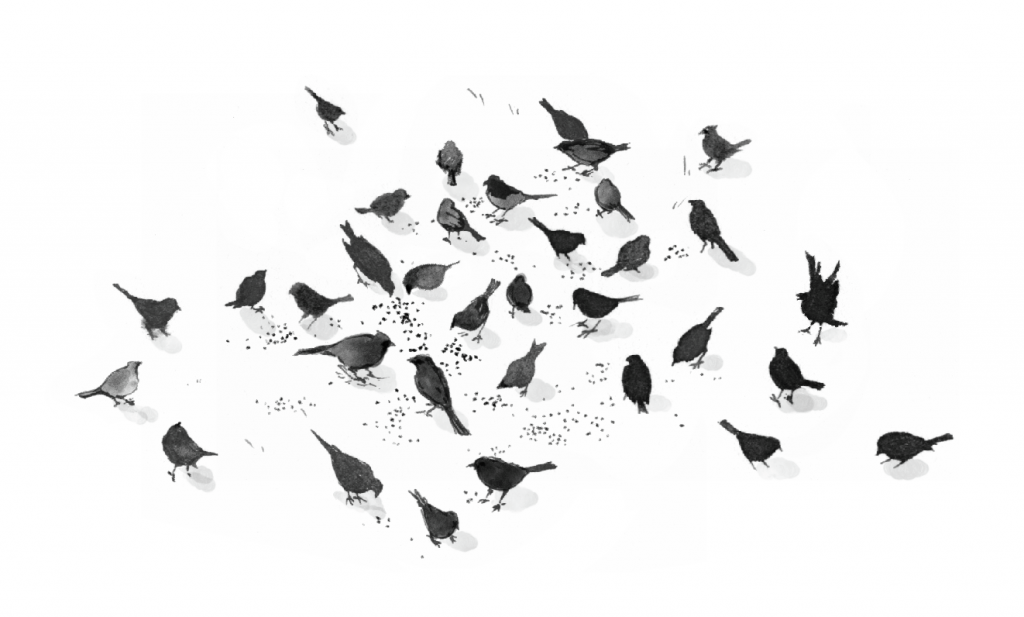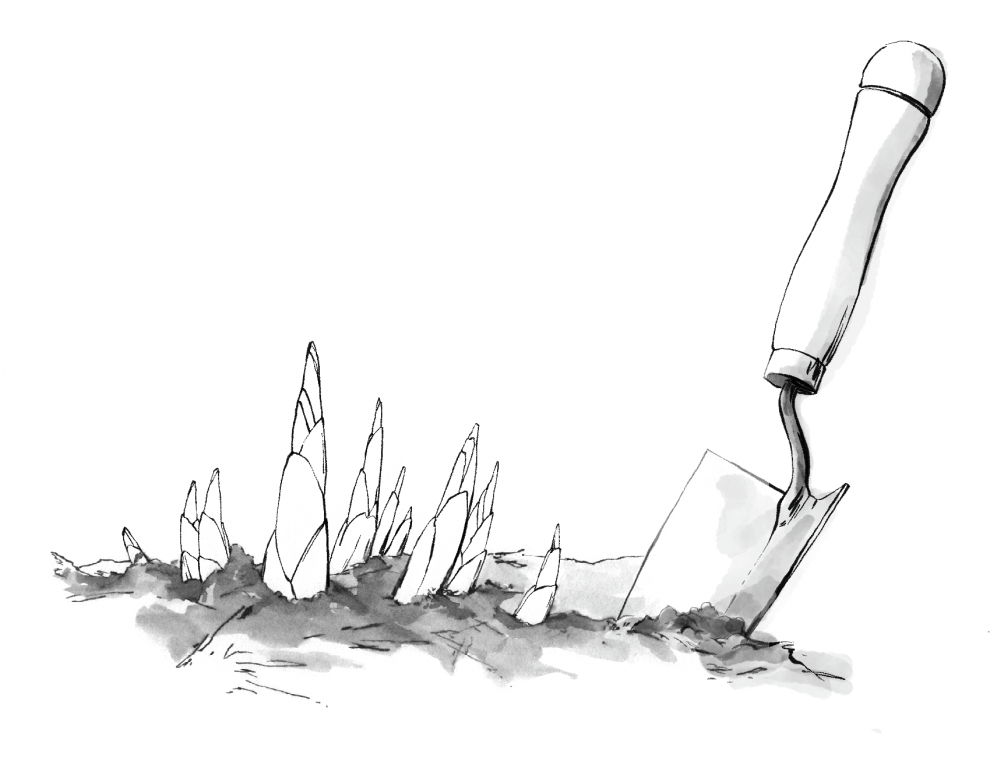I garden as a spiritual practice, as a practice in humanity and humility. I garden with attention, intention, and (now that I am an elder) the great gift of “enough time” to do what I love.
I plant fruit and flowers. I harvest food and beauty. Working the land, I uncover “pearl[s] of great price” throughout the year and in each season’s bounty: wisdom, perspective, and the love of God.
Spring
Earliest spring is when I am at my most impatient. I want out: out of the house, out of the cold, out of winter’s dark. None of this matters, of course. March in central Connecticut defies the old adage about lions and lambs. March is all fierce lioness, and she usually oversteps her territory well into the first two weeks of April. She leaves the lamb bit for later months.
On most days early in the season, I find myself dressed in layers, wandering restlessly from one window to another, staring at a still-too-cold-for-comfort world. On days when I venture into the yard and spy the green tips of daffodils rising through the leaf-litter of winter, I feel the same old, sweet thrill I have felt every year since I can remember. When winter robins bend their heads intently toward the earth, I know that they are hearing the earthworms wriggling in the thawing soil, and I feel hope.
These things are the stories of life still hidden to our eyes but burgeoning just beneath the frozen land. Our bodies, like those of all creatures, respond to the angle of the sun and increasing daylight. Like brother skunk and sister bear, we begin to awaken from the lethargy of long nights and months spent indoors. We want out long before the season is clement, and so we stretch a bit, stick our noses outside our dens, then curl back up to wait.
By the liturgical calendar, we are well into the season of Lent. The reflective season of mystery, the solemn season of mortality, the 40-day season (not counting Sundays) that ends with the start of the triduum and that mirrors the seasonal calendar of the northern hemisphere I inhabit. Spiritual practice, like winter cold, draws me inward this time of year.
Mark’s gospel describes the baptism and temptation of Christ as one and the same story:
“And just as [Jesus] was coming up out of the water, he saw the heavens torn apart and the Spirit descending like a dove on him. And a voice came from heaven: ‘You are my Son, the Beloved; with you I am well pleased.’ And the Spirit immediately drove him out into the desert. He was in the wilderness forty days, tempted by Satan.” (Mark 1:10–13)
Lent is about revelation, and the desert the Spirit sends us into is, most often, within us. Revelation isn’t just seeing what has been revealed; it is about owning and growing into what has been revealed. Jesus of Nazareth had a revelation that changed his relationship with the One he knew as Father, Abba. His revelation changed his life and the lives of millions throughout history.
Lent demands that we, like the One we follow, come to understand our relationship with the Holy in new, deeper, and more human ways. It brings us here year after year, through the cycles of nature of which we are a part. We see how what bloomed last year does, or does not, survive months below ground. We peer into the tombs we have constructed for ourselves, tombs hewn from shame, fear, or trauma.
A prayerful Lent gives us the strength to roll back the stones we have used to seal ourselves off from love and life and the good work of justice
Lent hopes that we can see how we don’t belong in these places. A prayerful Lent gives us the strength to roll back the stones we have used to seal ourselves off from love and life and the good work of justice.
It is hard work to enter willingly into the dark spaces of our hearts to do the holy work that resurrects us to life. Often we want out long before the work is done, long before we can comprehend what God holds for us, long before we are willing to own the prayer of St. Teresa of Ávila: that Christ has no hands but ours.
Still, the seasons turn and with or without us spring fulfills her promise of warmth and greening. What seemed dead will teem with new life and, if only we stay with it, stones will roll away from the tombs in our hearts and something beyond what we can now understand will emerge to tend the garden that is this world. This is my prayer.

Summer
The Word is living, being, spirit, all verdant greening, all creativity. The Word manifests itself in every creature.
—St. Hildegard of Bingen
It is mid-June, and beauty has descended upon central Connecticut. The air is finally warm and dry, the sun nearly reaches its zenith, the flowers bloom, and the tomatoes and peppers have begun their growth spurts.
Yesterday I stood barefoot in the warm grass, gazing upon a wall of blackberry blossoms while the sun massaged the knots from my back. It had been a week of worry in life, and I always carry concerns between my shoulders.
I decided to listen to the words of Jesus and not worry so much. I stood quietly and prayed with gratitude. I stood still for a long time and felt the weight drop from my back and the scales fall from my eyes.
I stood still for a long time and felt the weight drop from my back and the scales fall from my eyes.
The blackberries came alive. The sun’s rays warmed the air around the flowers, causing them to release their light, sweet scent. The pollinators responded by gathering in all their diversity: fat bumblebees, tiny green bees, hover flies, wasps, and moths, all moving busily from one white petaled flower to the next, slurping nectar and moving pollen that will result in hundreds of tart, juicy blackberries by the end of next month.
I was entranced. I moved closer and the insects made room for me, buzzing and tumbling in the air around my head. I was on holy ground. I was in the presence of God manifesting as bug and bloom, sun and shadow, human and hummingbird moth. We were all life living itself—plant, insect, and animal—different but not separate, all holy, all held in grace.
This state of grace is. Always. It isn’t here or there or limited to a certain day and time: It just is. Always. My attention to it is what waxes and wanes.
My friend Maiya gave me the gift of the phrase “stand in your grace.” The great Sufi mystic and poet Rumi teaches that God gave Moses this instruction: “Wherever you stand, be the soul of that place.” That both Maiya and Rumi use the word stand is not lost on me. Standing implies a grounding, a being right where I am. That my mind is so often somewhere different than my feet is not lost on me either. It is my prayer that I might dwell, wholly and fully, in myself, in the grace of God.

Autumn
It looked like a bejeweled placenta. I saw it as I cut and lifted the dried stalks of the globe thistle to bring them to the compost pile.
I raised the strange, tear-shaped treasure to eye level and looked more closely. Three emerald and blue gems at the bottom, a line of smaller shimmering dots at the top, and opaque walls that became translucent when I lifted it to the sun and saw, through its greenish-gray swirl, the familiar pattern of monarch wings.
My heart lifted and then sank a bit. A monarch had successfully laid her eggs on the milkweed I planted for just this reason, and her larval offspring had eaten enough of it to climb into the thistle and pupate. But late October in Connecticut is too late for any butterfly to emerge and survive. We had already had a hard freeze, and I knew the butterfly was stillborn.
I counted the miracle of it as proof that one elder-woman with natural, diverse gardens could make a difference. I hoped that next year the reproductive timing would be better. I tucked the brittle stalk upright into the sturdy shelter of a hydrangea to protect it long enough to show to my granddaughter the next day.
Maybe this butterfly would be the one to tilt the species back toward growth.
The next morning I returned to the front gardens to complete my work. I bent and began snipping the brown fronds of ferns. I stood to ease the small of my back, scanning the garden for what else still needed tending to, when I saw it.
A black and orange butterfly sat on a broad hydrangea leaf. Its wings were spread wide to the warmth and energy of the autumn sunshine. I actually dropped my garden shears and stood gawking for a moment before I understood.
The butterfly was alive and had emerged into a world that was hostile to it. It was born out of season. It would, almost immediately, have to take a long and dangerous journey south to survive. I lifted the thistle stalk out of the hydrangea to reveal a transparent, tattered, and torn chrysalis. The container in which transformation had occurred had fulfilled its purpose and had released a new member of a dying species. Maybe this butterfly would be the one to tilt the species back toward growth. Maybe it would not survive its first days, and the monarchs would die out. This is the tragic trajectory we are on if nothing changes.
Although we are months away from another story of another birth into a dangerous world, I am reminded that the incarnation is always happening. God is always giving birth to life and consciousness: “I am about to do a new thing” (Isa. 43:19). Sometimes it is a new sun, sometimes a new awareness, sometimes a butterfly in October. May we human beings (finally, finally) perceive it, change course, and change the trajectory of the world.

Winter
It is the beginning of winter here in the northern hemisphere, and the gardens are dormant. The Earth may laugh in flowers, to quote Ralph Waldo Emerson, but her sleep-sounds find their origin in a much older and elemental language of soughs, cracks, clacks, and deep murmurs. It is a primeval language, its consonants harsh and high as the cold wind whistling through the gap between window and wall in my office, its vowels so resonant and low that they must be more felt than heard. It is an ancient language of the land laid bare and of hunger, cold, and the hope of survival.
Here in New England, the keening north wind chases warm-blooded creatures like me to seek shelter. For a few months I inhabit my home more than my gardens. Still, I bundle up and venture out with my dog several times a day to feed the birds and compost piles and to notice what only winter can reveal.
My garden is just there, in the liminal space between death and birth, graying and greening.
The ground, soft and warm only weeks ago, is now hard and frozen beneath my feet. Wherever dog paws and summer drought made an end to the grass, the freeze and thaw of the last few weeks have created hundreds of tiny runnels filled with meltwater in the sun and ice in the shadows. I splash and crackle my way across the yard to the garden gate.
The vegetable garden is quiet in the weak December sun. Nothing green or growing shows above its blanket of woodchips and composted rows. I stop for a moment to let the weight and mass of my body ground itself in this place I love so much. I close my eyes, lift my face, and go silent. The sun warms my skin, and the light wind chases that warmth away almost immediately. I settle into my body and not my to-do list.
I become aware. I remember that I am standing on holy, living ground. Below my feet and the frost line, the earthworms still tunnel and a network of roots and mycorrhizae slowly shunt and shed nutrients. The ground beneath me thrums with life.
That I sense this thrum is a wonder to me. My aging ears don’t hear half as much noise, conversation, or birdsong as they used to. But no matter, my other senses are honed, and the dream-life of the winter garden is a language not meant for the ears anyway. Dreams have their life in the between-times. My garden is just there, in the liminal space between death and birth, graying and greening. It is in the winter garden that the Alpha and Omega kiss, and the cycle of life continues forever and ever. Amen.
This article also appears in the March 2021 issue of U.S. Catholic (Vol. 86, No. 3, page 30-34). Click here to subscribe to the magazine.
Images: Illustrations by Lauren Nassef












Add comment